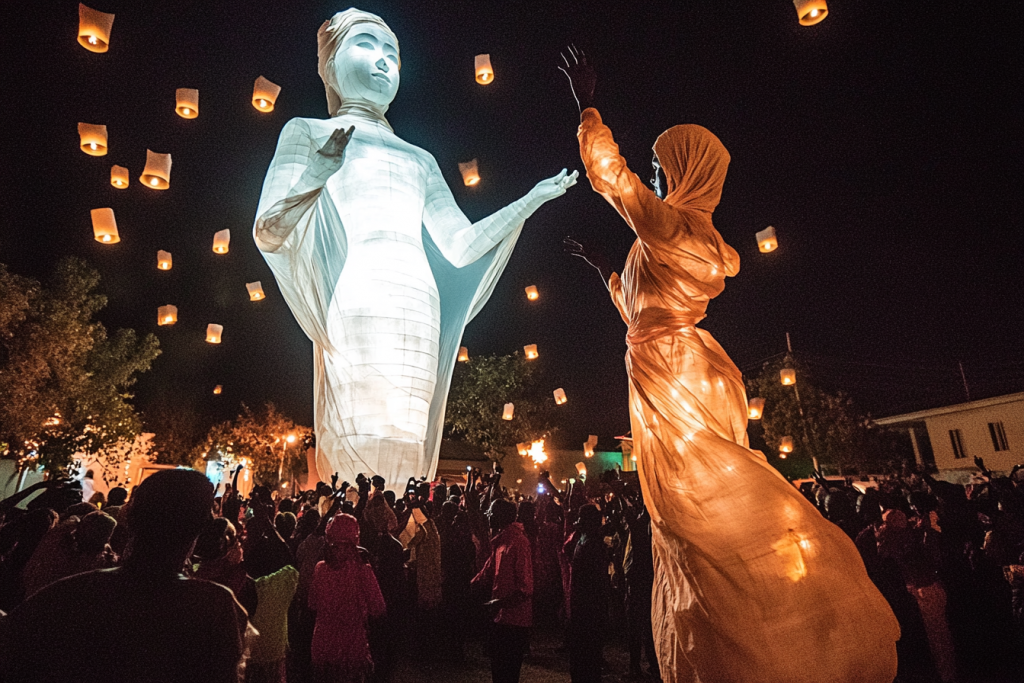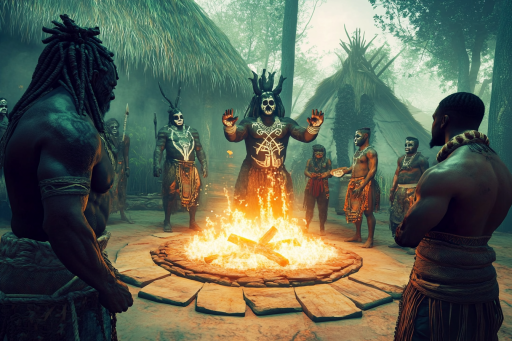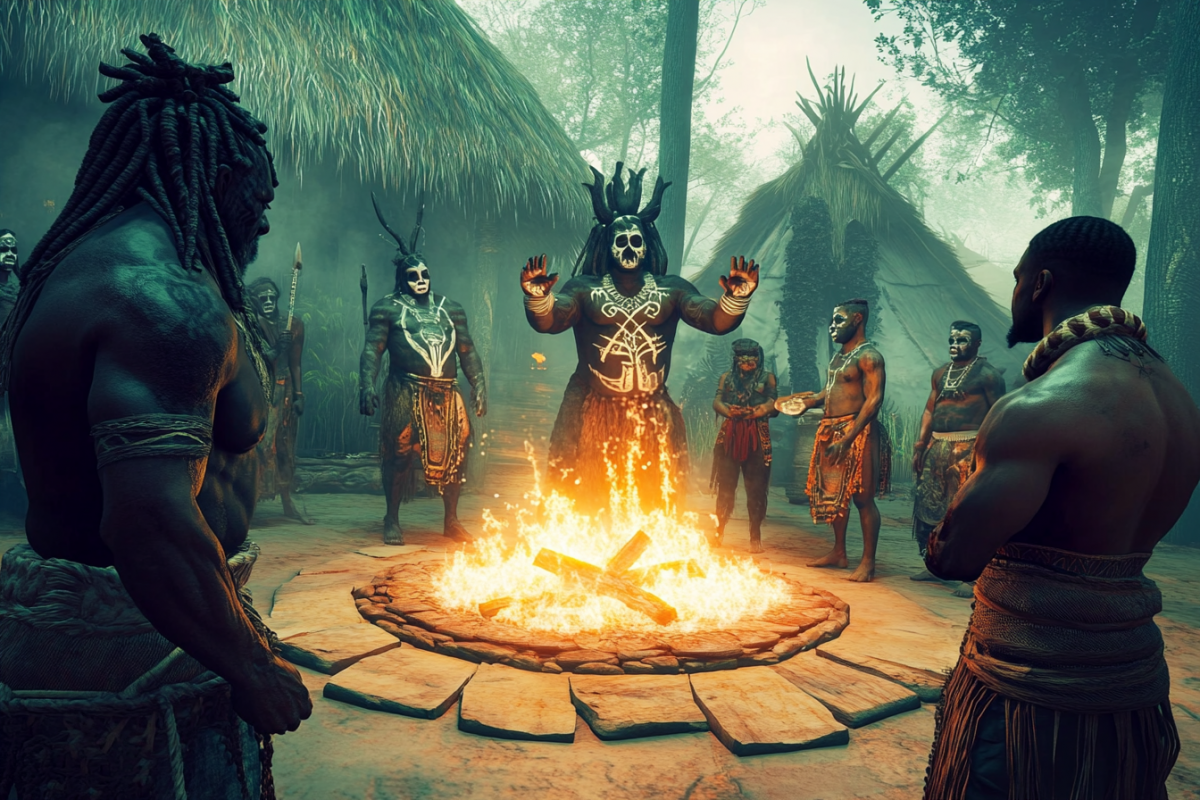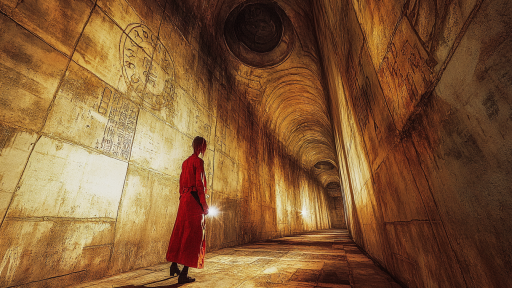
Across the world, hidden from modern civilization, communities continue to practice rituals that seem to defy logic, science, and even belief. From ceremonies that invite spirits into the living world to painful rites of passage meant to test the limits of human endurance, these traditions have been passed down through generations. Some are meant to bring fortune, others to ward off evil, and a few exist purely to challenge the body and mind. Whether seen as superstition or sacred, these strange rituals remind us that mystery still thrives in the farthest corners of our planet.
The Firewalkers of the South Pacific

On remote islands in the South Pacific, barefoot villagers walk across beds of scorching embers without injury. This ritual is not just a test of endurance but a spiritual practice believed to prove the strength of one’s soul and connection to the ancestors. Witnesses describe the eerie silence as participants move through the flames, showing no signs of pain. The unexplainable ability to remain unharmed has led many to wonder if faith truly has power over fire.
The Living Dead Festival of Madagascar

Every few years, the Malagasy people of Madagascar perform “Famadihana,” the turning of the bones. Families exhume the bodies of their ancestors, rewrap them in fresh silk, and dance with the corpses in celebration. This tradition strengthens bonds between the living and the dead, ensuring that the spirits remain honored and never forgotten. While outsiders may find the practice unsettling, for the Malagasy, it is a joyous occasion filled with music, laughter, and deep respect.
The Bullet Ant Glove Initiation of the Amazon

Deep in the Amazon rainforest, the Satere-Mawe tribe has a painful rite of passage for young boys becoming warriors. They must wear gloves woven with live bullet ants, whose stings cause excruciating pain described as “waves of burning fire.” The boys endure this torture multiple times, proving their strength and resilience to the tribe. The ritual is not just about physical endurance but about forging a mind strong enough to withstand any hardship.
The Ghost Marriages of China

In some rural regions of China, families arrange marriages for the deceased, believing that spirits must not remain alone in the afterlife. These ghost weddings involve elaborate ceremonies, with symbolic offerings and often lifelike effigies standing in place of the bride and groom. The practice ensures that family honor is preserved and that restless spirits do not bring misfortune. While controversial, ghost marriages remain a deeply rooted tradition in certain communities.
The Festival of Piercing in Thailand

During the annual Vegetarian Festival in Thailand, devotees take part in extreme body piercings as an act of spiritual purification. Men and women impale their cheeks, tongues, and other body parts with swords, skewers, and even household objects—yet they show no signs of pain or heavy bleeding. They believe they are channeling divine spirits that protect them from harm. The spectacle is both mesmerizing and shocking, attracting thousands of spectators every year.
The Tree Hanging Ritual of India

In a remote Indian village, a daring and sacred ritual sees men suspended from trees by hooks pierced through their flesh. Known as “Garudan Thookkam,” this ceremony is dedicated to the god Vishnu, symbolizing devotion and the sacrifice of pain. Devotees believe that by enduring this ordeal, they bring blessings upon their families and communities. The sight of men swinging mid-air, their bodies straining against the hooks, leaves onlookers both awed and disturbed.
The Self-Mummification Ritual of Japan

In ancient Japan, some Buddhist monks practiced a grueling and disturbing ritual known as Sokushinbutsu, or self-mummification. Over a decade, they followed a strict diet to reduce body fat, then consumed toxic tree sap to kill bacteria inside them—effectively embalming themselves from within. Those who succeeded were revered as living Buddhas, their remains placed in temples as sacred relics. The practice has long been banned, but its existence still fascinates and horrifies historians.
The Finger Cutting Ceremony of Papua

Among the Dani people of Papua, grief is expressed in an extreme way—by amputating fingers. When a loved one dies, women of the tribe cut off parts of their own fingers as a physical manifestation of sorrow. The ritual, though now less common, is meant to show deep emotional and spiritual pain. The sight of elders with missing fingers tells the story of loss carried through generations.
The Whipping Rituals of Ethiopia

In Ethiopia’s Hamar tribe, young men must endure a brutal whipping as part of a rite of passage into adulthood. Female relatives volunteer to be lashed with sticks, their scars serving as proof of devotion and family honor. The young men, in turn, must complete a dangerous cattle-jumping challenge to prove they are ready for marriage. The ceremony is a blend of pain, endurance, and ancestral tradition that continues to this day.
Pain, Honor, and the Unseen

Rituals connect humanity to forces beyond understanding, whether spiritual, ancestral, or supernatural. Some of these traditions push the limits of endurance, while others blur the lines between life and death, devotion and sacrifice. For those who perform them, these practices are not strange—they are sacred. The question is, in a world that seeks reason in all things, can mystery and belief still thrive?





